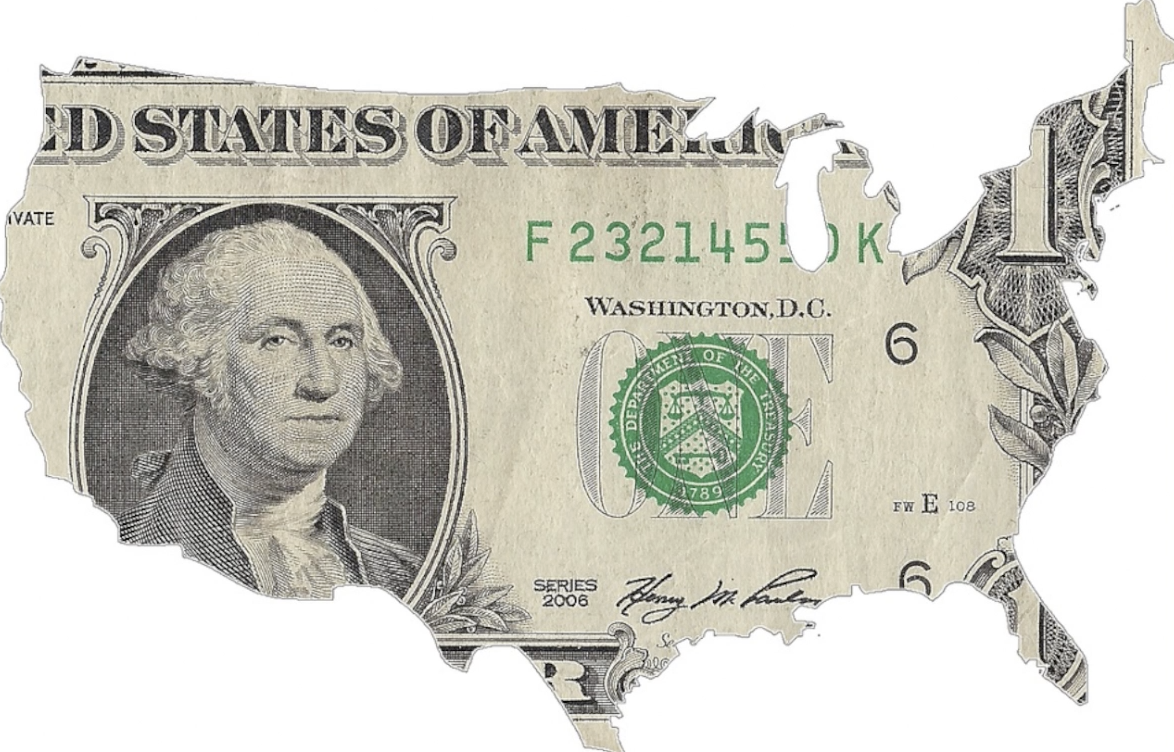The Economy, The Market, And A Stock Idea

The Economy
- The new administration’s pro-growth, you’re-gonna-get-tired-of-winning attitude, has had a great psychological effect on the mid-west, the south, and middle America… drawing those once-idled now-excited workers into the labor force
- Meanwhile, the new FOMC policy is pro-hike-up-interest-rates, in order to curb the past 8 years of pro-growth policy. The FOMC attitude is justified by one simple factor → on paper, the US economy is looking strong, specifically unemployment is low and inflation is finally approaching 2% again.
- So, as you can see, the FOMC’s efforts to keep inflation under control (by raising interest rates) clashes with the goals of the new administration, which promised to boost economic growth above any levels seen in recent history
- But the FOMC’s actions are quite normal and to be expected. Every 8 to 10 years the FOMC needs to shift policy because healthy economies work in cycles. It’s a balance — a give and take… 24/7 growth is dangerous. In the same way that being awake 24/7 will kill you.
- Growth is good for an economy, but extreme rapid growth leads to extreme rapid inflation, which leads to unaffordable pricing…
- A country at full employment leads to too much employee supply and not enough employer demand, which could lead to stagnant salary growth…
- These two outcomes together won’t mesh well for we the people.
- The FOMC knows this and therefore, is going into a new, more aggressive phase of draining the easy money from the financial system as the economy continues to strengthen under the new administration.
- Chairwoman of the FOMC, Janet Yellen: “We certainly welcome stronger economic growth in the context of price stability”
- The 2008 financial crisis marked the start of a decade of highly expansionary monetary policy (Quantitative Easing), something many people thought wouldn’t work in rehabilitating the economy. However, it accomplished what it set out to do, and the US never ran into the feared ‘negative interest rate’ problem.
- Now economic normalization is under way.
- As a country, we should celebrate that economic achievement. We got out of the 2008 crisis, and are headed into a brighter economic future.
- Trump should take the raising of interest rates as a compliment… clearly the FED wouldn’t raise interest rates if they thought the economy would break under both Trump policy and tighter credit policy.
- The FOMC’s actions indicate they feel the new administration’s policies will keep us economically resilient, and our growth won’t be hindered by the tightening of credit — I don’t understand why Trump would accuse the FED of sabotaging him. They’re paying him a compliment.
- Investors clearly agree, and are giving our economic climate a nod of approval. The rate hike sent stocks AND bond prices higher. The Dow climbed ~100 points, almost breaking 21,000.

The Stock Market
- The S&P is close to 2,400, so its in a low 20 P/E range (GAAP), which to me shows that the market is overvalued. The market has been bumping it’s head on that ceiling for the past month or so now…
- When the S&P is at a 15 P/E, it starts to become too cheap. A 15 PE marks the market’s downside at a price around 1,800.
- A 17.5 P/E is a more fair value market.
- The only way a low 20 P/E range could become justifiable for the market is if earnings start climbing… fast.
- …which, as you know the FED is tightening credit, so buyers may not be coming out of the woodwork anytime soon.
- This may be setting us up for a correction, because the higher earnings needed to justify market prices may not happen in the near future.
- This is only true of course, until consumers do begin to feel the effects of the pro-growth fiscal policy… whether it’s in the form of lower taxes, cheaper healthcare costs, fewer people unemployed — working instead, to earn those hearty minimum wage paychecks….. (kidding)
- In conclusion, the market is hitting a ceiling right now, when one looks at company earnings and compares them to stock prices.
- I’m taking a step back in the bullish allocation I’ve had for the last several several months and I’m focusing on more diversification.
- Still putting money into the market…but managing in a more conservative manner and diversifying into defensive plays i.e. gold, silver, metals, bonds, etc.
- Yep, I’m anticipating a market correction, but, I’m bullish on the US for the long (very long) term. “The man who is a bear on the future of the United States will always go broke.” — J.P. Morgan
- To put in perspective, a low 20’s P/E isn’t off the charts, but it’s too expensive compared to what our US companies are actually earning.
- I’m not looking to gamble on the chance that maybe there’s a little more upside in the market right now.
- I’d rather put money into investments that are better positioned and have more room for growth in the coming months.

A Stock Idea
- TSLA - I started going full-bull on Tesla last year when it broke under $200 a share.
- Whether or not you believe in climate change, when lithium-ion batteries become more economical over gas, there will be no reason to purchase fossil-fuel-powered cars… or fossil-fuel-powered anything.
- Environmentalists have long contended that the only way to combat the future possibility of earth and it’s inhabitants frying, is to lower fossil fuel emissions.
- With environmentalists, the focus has been on lowering fossil fuel emissions through government regulation, which could cap oil drilling or coal production.
- But seeing as the current administration is defunding the EPA, that’s unlikely.
- So instead, many are starting to work at lowering demand for fossil fuels.
- …which has been a difficult task since oil is mostly an inelastic good, meaning price swings have a small impact on the market’s desire for it.
- Other sources of energy have not been price-competitive, or competitive logistically, to implement.
- Tesla is providing the first source that solves both of these issues → the Gigafactory… a 5.8 million square ft battery plant, providing the company with the ability to scale & mass produce lithium-ion batteries.
- Lithium-ion batteries are THE key to making Tesla’s new source of energy price-competitive and logistically competitive with the fossil fuel alternative.
- Tesla will be able to churn out 500k cars by 2018 and 1M by 2020 (compare to last year when Tesla only produced ~84k cars)
- Whether Tesla can meet this goal is up in the air. But if they do, I’m sure other car manufacturers will ramp up production as well.
- This is a good thing for the electric car market because there is so much room for growth.
- Plus it’d be great news for environmental activists and climate-change-deniers alike — we all won’t end up burning to death.
- As for the-now-Tesla-owned SolarCity and solar firms in general, they have all been fairly unprofitable.
- Not enough consumers have been willing to absorb the massive upfront costs of buying and installing solar panels.
- These costs have come down in recent years. In addition, Tesla-produced batteries packs will have much higher storage capacity, another huge problem weighing on solar’s success.
- These factors will make solar energy more cost-effective and logistically competitive as well.
- This economic + logistic solution is an huge factor in leading to a greater number of homes, commercial buildings and utilities installing Tesla solar panels backed by Tesla-made batteries.
- Tesla’s vision for the world is a 360-degree solution: the power source for every home and business across the nation will be long-lasting, rechargeable batteries capable of storing massive amounts of solar energy and fueling everything from cars to heating to a simple light bulb.
- Yes, it’s not a simple or guaranteed task. Logistically, however, Tesla has laid it all out, set everything in place and is ready to lunge ahead and achieve its 360-degree solution.
- In addition, the CEO is a freaking rocket scientist.
Disclaimer: The opinions voiced in this material are for general information only and are not intended to provide specific advice or recommendations for any individual. To determine which course of ...
moreComments
Please wait...
Comment posted successfully.
No Thumbs up yet!



